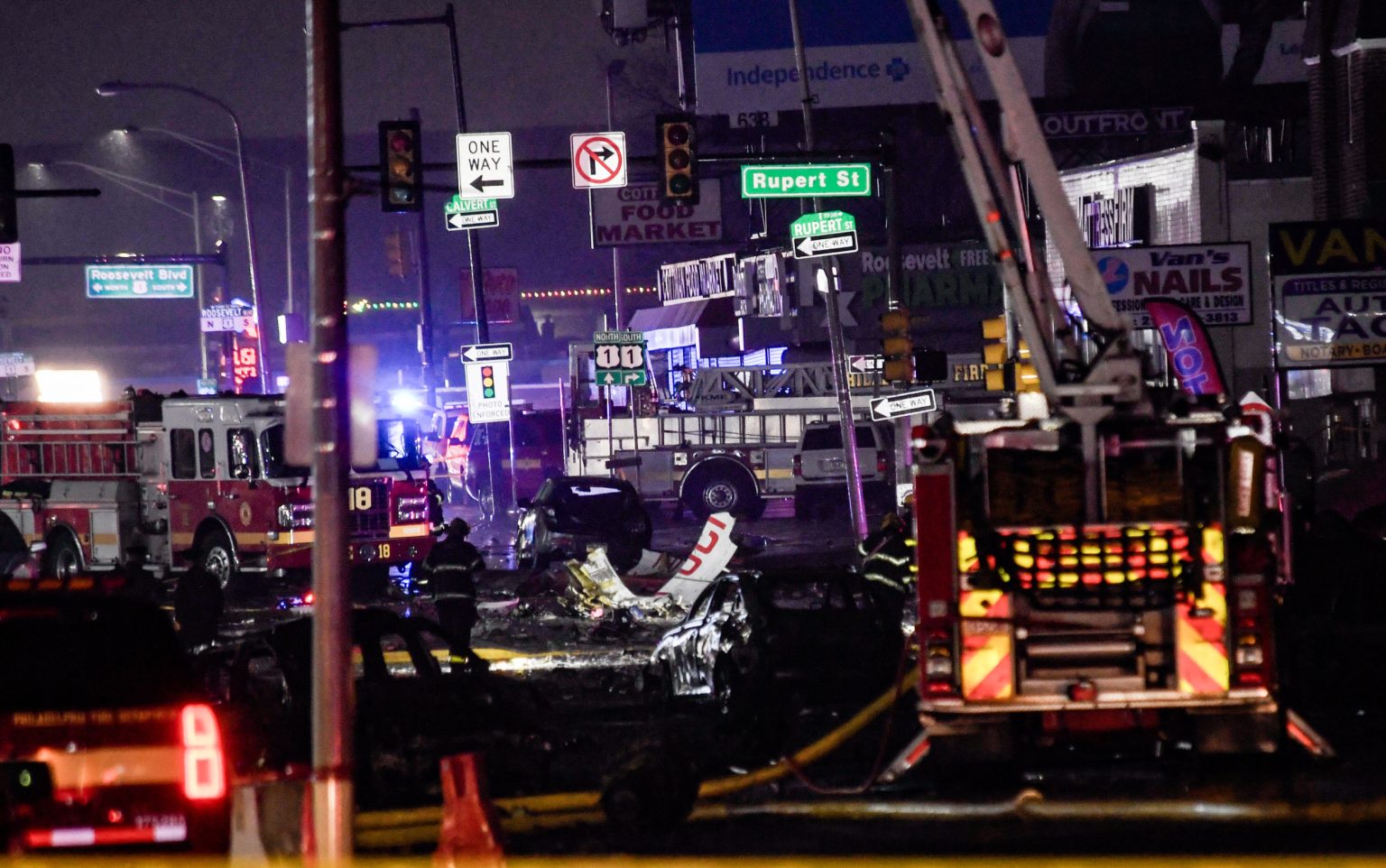The skies over Philadelphia bore witness to a tragic aviation accident on Friday evening when a Learjet 55, en route from Philadelphia to Springfield-Branson National Airport in Missouri, crashed near the Roosevelt Mall, claiming the lives of all six individuals onboard and one person on the ground. The horrifying moment of impact was captured by a dashcam, providing a chilling visual record of the plane erupting into flames upon contact with the ground, transforming the twilight sky into a fiery spectacle. This catastrophe follows closely on the heels of another mid-air collision near Washington, D.C., just two days prior, involving an American Airlines flight and a military helicopter, resulting in the presumed loss of all lives onboard both aircraft. These consecutive incidents have understandably fueled mounting concerns regarding aviation safety protocols and procedures.
The Learjet 55 carried four crew members and two passengers, one of whom was a young girl returning to Mexico after receiving treatment for a life-threatening illness, accompanied by her mother. The grim reality of no survivors was confirmed on Saturday morning by Philadelphia Mayor Cherelle L. Parker, who also announced that nineteen individuals on the ground sustained injuries, with one fatality resulting from the impact on a nearby vehicle. Mexican President Claudia Sheinbaum later confirmed the nationalities of all six individuals onboard as Mexican, expressing condolences and offering consular support to the grieving families. The accident site became a focal point of intense emergency response and investigation, with fire marshals working diligently to secure the area and prevent further complications.
The tragic incident unfolded against a backdrop of recent aviation safety concerns, prompting discussions and investigations into potential contributing factors. Just two days prior, the skies near Washington, D.C., witnessed a devastating collision between an American Airlines plane and a Black Hawk military helicopter, resulting in the presumed loss of all onboard. These back-to-back incidents have naturally intensified public scrutiny of aviation safety regulations and practices. Former President Donald Trump, commenting on the Philadelphia crash, expressed sadness at the loss of life and praised the swift response of first responders. He had previously raised questions about the potential role of diversity, equity, and inclusion (DEI) initiatives in the Washington, D.C., crash, although no official connection has been established.
The immediate aftermath of the Philadelphia crash saw a surge of reactions from officials and the public alike. Mayor Parker expressed the city’s collective grief and emphasized the unified response in addressing the tragedy. President Sheinbaum of Mexico conveyed her condolences to the families of the Mexican nationals onboard and assured them of consular assistance. Pennsylvania Governor Josh Shapiro joined local officials at the crash site, providing updates and offering support. The incident quickly became a trending topic on social media, with numerous videos capturing the crash and its aftermath circulating widely. These visual records served as stark reminders of the fragility of life and the devastating consequences of such accidents.
The ongoing investigation into the Philadelphia crash, led by the National Transportation Safety Board (NTSB), will be crucial in determining the precise cause of the accident. The NTSB will meticulously examine all available evidence, including the recovered flight data recorder and cockpit voice recorder, along with witness accounts and environmental factors, to piece together the sequence of events leading to the tragedy. This investigation will not only provide closure to the grieving families but also inform future safety protocols and potentially prevent similar incidents from occurring. The focus remains on ensuring a thorough and transparent investigation that addresses all relevant aspects of the crash.
The Philadelphia plane crash, a tragic event that claimed the lives of seven individuals, underscores the importance of continuous vigilance and improvement in aviation safety. While the specifics of the cause remain under investigation, the incident serves as a stark reminder of the potential risks associated with air travel and the need for robust safety measures. The NTSB’s investigation, along with ongoing efforts to enhance aviation safety protocols, will be crucial in preventing future tragedies and ensuring the safety and well-being of all those who travel by air. The outpouring of grief and support from officials and the public reflects the shared sense of loss and the collective hope for a safer future in the skies.

